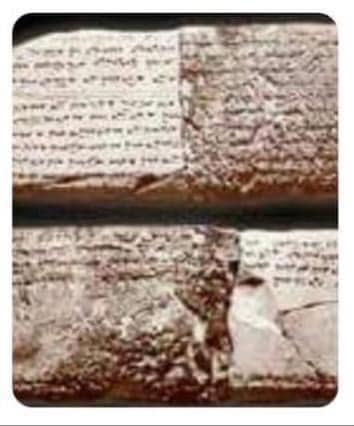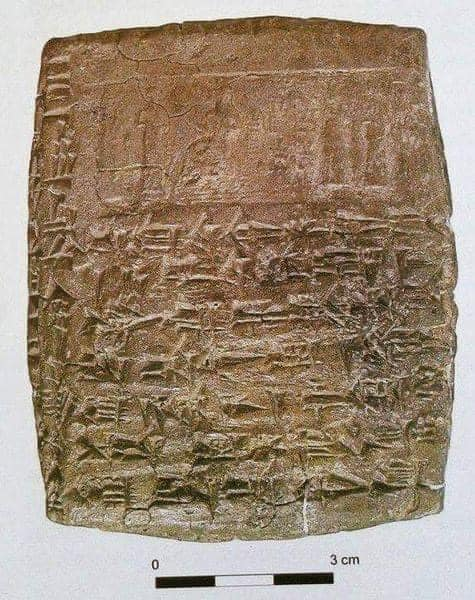Ugarit from Syria to the world...the oldest written alphabet

The buildings of Ugarit were constructed of carved stone, which helped keep them largely intact
In the 15th and 14th centuries BC, the city was the capital of a small kingdom
Archaeologists classify Syria as an important center for more than 40 successive civilizations on its land, with archaeological sites numbering more than 4,500, including the Kingdom of Ugarit, which is one of the most important and famous archaeological sites in the world. It was founded by the Canaanites in the modern Bronze Age, and was one of the most important cities. The Canaanite coast, which is considered one of the finest parts of the ancient East.
In the 15th and 14th centuries BC, Ugarit was the capital of a small kingdom, and its name was taken from Ogaru, meaning field in Sumerian. It also means green land or farm (plain), and the name may mean the castle surrounded by a wall, which represented ancient Ugarit.
Discovery and naming
The site of Ugarit was discovered in 1928 by chance when a Syrian farmer's plow collided with construction waste while plowing his land. The French mission began its work in 1929. It is noteworthy that the discovered part of the kingdom does not exceed a quarter of the total area of the site, and many of the discovered antiquities were transferred to the Louvre Museum in Paris during the French occupation.
The discovered documents and written texts indicate that this kingdom had developed a prosperous economic, cultural and administrative life at the end of the modern Bronze Age before it was completely destroyed, as it benefited from its geographical location at the top of a triangle that made it a meeting place and crossing of land and sea routes between civilizations and kingdoms on the Euphrates River to the east, the Aegean world and the island of Crete. to the west and Egypt to the south. It also benefited from the geographical location within the Kingdom and its elements, such as mountains, plains, rivers, climate, and others, in life, economic and cultural activities.

Ras Shamra location
The remains of ancient Ugarit are located near the western Syrian coast and overlook the sea from an archaeological hill called “Ras Shamra,” which was named after the name of a fragrant plant covering the ruins of the site, known in Syria as “Shamra.” Some interpret the name in Aramaic to mean guarding and surveillance because it is a high place and close to the sea.
The ancient hill of the ancient city stands on agricultural land in the shape of a slightly skewed square, with an area of approximately 36 hectares and an average height of 17 meters above the ground. The hill is divided into five layers from the top, each layer is divided into several floors, where the fifth layer includes the remains of the Neolithic era. This means, as the French mission’s excavations showed, that this hill was inhabited from the Neolithic period in the seventh millennium BC until the modern Bronze Age, after Ugarit was destroyed at the beginning of the 12th century BC.
Architectural monuments
The buildings of Ugarit were constructed of carved stone, which helped to preserve them largely intact, and made it possible to know their construction system, as they reached the peak of their construction on the Syrian coast in the period between 1200-1400 BC. Excavations revealed traces of a city with well-planned buildings and advanced sciences. Evidence of the prosperity of this kingdom is the discovery of three palaces and a number of temples. This can also be seen in the layout of its residential houses, some of which were two-story, which gives an impression of the economic prosperity that the city has reached.
At the current entrance to the city, we see the fort and its secret door, which in turn leads inward through an opening created in the wall of the wall to its left, where the fortified tower can be seen. After that, a road leads us to the first neighborhood of the city, which is the Al-Qusour neighborhood, the official neighborhood, which occupies the northwestern part of the city. This neighborhood is headed by a large palace (the Western Royal Palace), surrounded by two palaces, to the south and to the north. These two palaces are considered one of the most important and famous residences of princes and kings in the ancient East. Next to the palace courtyards to the north is the royal cemetery, which consists of some caves and funerary crypts.

To the east of the Al-Qusour neighborhood is a residential neighborhood characterized by its spacious houses, crossed by several main streets, from which some winding side streets branch off, which appear narrow at their closed ends. City houses consist of several sections. The entrance is followed by a staircase and a hallway, sometimes a water well and bathrooms connected to water channels, and a courtyard or courtyard directly connected to the entrance and the hallway, around which rooms, shops, and workshops are distributed. It was observed in these houses that the dead were buried in their homes. The home grave is characterized as a burial crypt with an entrance in the form of a hole or a staircase.
In the north, there is the upper city known as the religious district “Acropolis” and famous for its temples “Baal and Dagan”. This section is located in the part above the residential neighborhoods located on the northern side of the city. In the eastern part of the city, we will see the Royal Palace Garden connected by a corridor to the south to the Royal Palace warehouses.
On the southern side, a square appears in the middle, with a water basin fed by a complex network of canals. In a hall adjacent to this square, a kiln was discovered for baking pottery figures, on which thousands of cuneiform texts were inscribed, shedding light on the city’s history, relationships, economy, literature, gods, and more.

Ugarit Portal
Ugaritic alphabet
Ugarit provided the world with one of the oldest written alphabets in history (the Ugaritic alphabet), which dates back to the fourth century BC, and is currently taught in 40 universities in the world.
Through it, written cuneiform signs were reduced from 600 signs to 30 letters, and most of the texts written in this language are economic and literary texts. The original copy of a pottery figure, 5.5 cm long and 1.3 cm wide, is currently preserved in the Damascus National Museum. This alphabet is related by kinship to the Canaanite, Aramaic, Arabic and Biblical Hebrew languages, all of which belong to the Semitic language family. This family is divided into a number of groups:
- Northeastern Semitic, used in Mesopotamia, and includes Akkadian in its Babylonian and Assyrian dialects.
- Northwestern Semitic, which contains Ugaritic, Phoenician, Moabite, Hebrew, and a number of other Canaanite dialects.
- South Semitic, containing Classical Arabic, Old South Arabic and Ethiopic.

Oldest piece of music
Ugarit is considered the true founder of Western music, as the oldest recorded musical pieces in the world, which date back to the second millennium BC - predating Pythagoras by a full thousand years - were discovered in 1950 in the city of Ugarit, and were deciphered by the writer Richard Dumbrell, author of the book “Antiquities of Musicology in the East.” Old Nearest.
Around 1400 BC, a musical collection containing 36 songs called “Harranian songs” was written down, inscribed in cuneiform script on clay tablets. They appear to have been composed as an invocation to the gods, and one of them exists almost completely, making it the earliest known example of musical notation in the world. Track link:
Its libraries
Historical written documents indicate that this city was once a prominent cultural, educational and civilizational centre. Several libraries were discovered there, one of which belonged to the high priest, another library in the home of a royal employee, and various other libraries. In these libraries, religious and cultural books, commercial letters from other countries, multiple dictionaries of the Sumerian, Akkadian, and Ugaritic languages were found, as well as literary, religious, and scientific texts. An excerpt of the famous Sumerian legend, “Gilgamesh,” was also found.
Its end
There are two hypotheses about the end of Ugarit in 1180 BC, in a disaster whose effects are still evident, especially in the royal palace. Either it was a strong earthquake that destroyed the city or an external invasion by a people known as the Sea Peoples.
Source : websites

